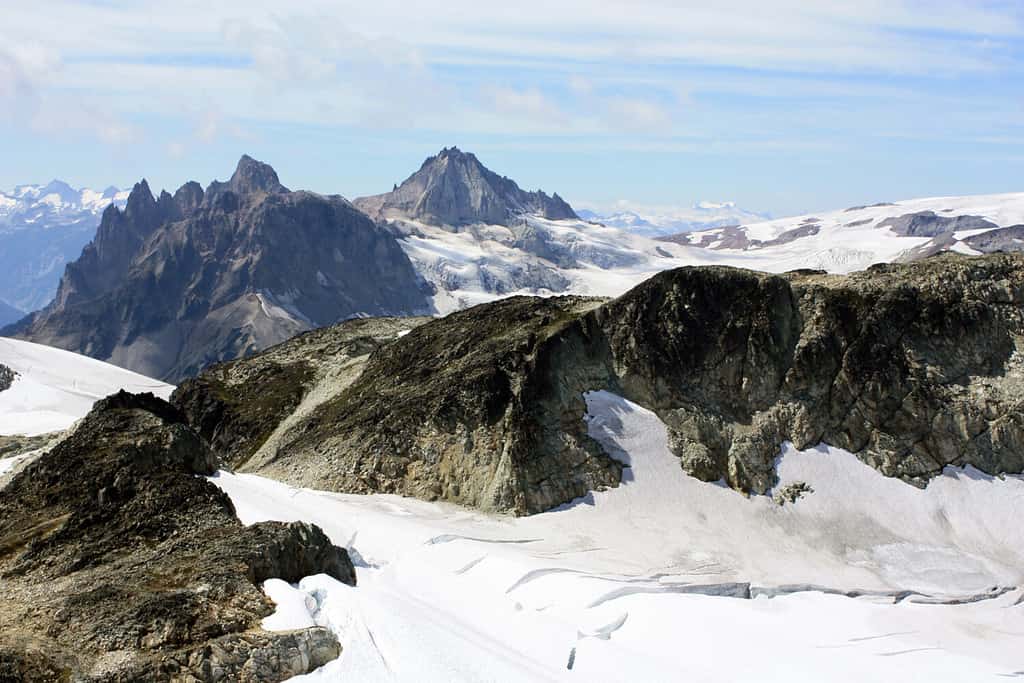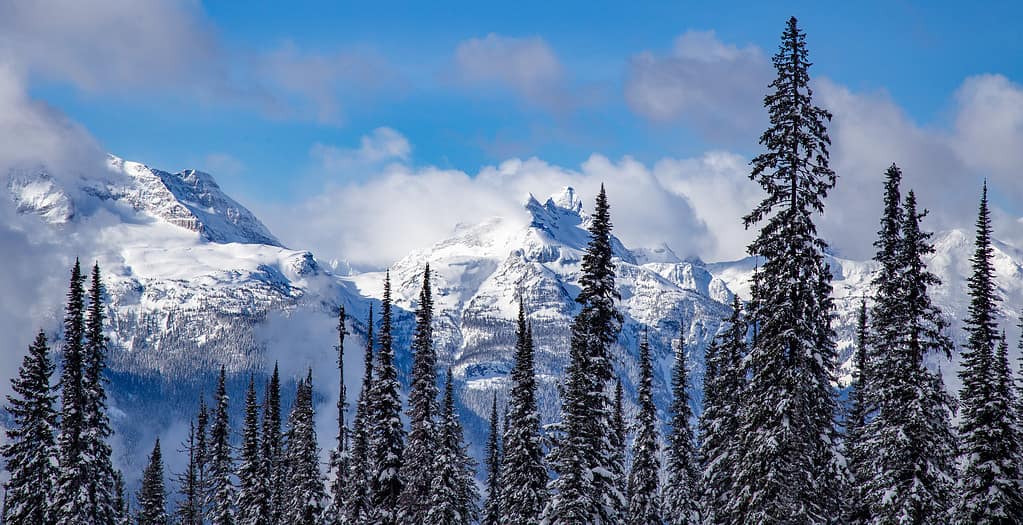British Columbia has low crime rates, quality healthcare, and a high standard of living. And, if you can survive the winters, it is a fantastic place to live. Snowfall in British Columbia lasts from November to March. Most winters are fairly reasonable. However, the year the biggest snowstorm to ever hit British Columbia struck, over four and a half feet of snow fell!
Average Snowfall for British Columbia

The average amount of snow that British Columbia gets yearly depends on the area. However, the further north you go, the more snowfall you see.
©Marius M. Grecu/Shutterstock.com
The typical amount of snow in British Columbia depends on the area. For instance, in the central part of the province, Kelowna typically gets about 25 inches of snow annually. It’s a bit less in the southwest of the mainland, with Vancouver receiving about 17.5 inches of snow in a year. On Vancouver Island in the province’s capital, Victoria, residents only see about 13 inches of snow in a season. That’s a huge difference compared to northern British Columbia, in Prince George, where nearly 56 inches of snow dumps on the city annually.
The annual snowfall is also affected by the average winter temperatures of each area. Vancouver and Victoria stay pretty warm between November and March. Average highs range from 45°F to 50°F, whereas average lows range from mid-thirties to low-forties. Often, it does not stay cold enough in these regions to accumulate much snow.
On the contrary, cities in northern British Columbia have much cooler temperatures throughout the winter. For instance, temperatures in Prince George between November and March range from 15°F to 36°F. Those are ideal temperatures for snowfall.
Biggest Snowstorm to Ever Hit British Columbia
On February 11, 1999, Tahtsa Lake experienced the biggest snowstorm to ever hit British Columbia. Tahtsa Lake is on the western end of Nechako Reservoir and often sees a lot of rain and snow annually. On that day in February, 57 inches of snow covered the area. Luckily, this 118 square kilometer lake is fairly remote. Fed by glacial streams that wind down from the mountains, Tahtsa Lake is a good fishing destination, but not many people live nearby. However, this much snow certainly disturbed the wildlife.
Most Snowfall in One Season in British Columbia

Revelstoke has about 40 to 50 feet of snow annually. So, it is no surprise that Mount Copeland, a summit in the Monashee Mountains close to Revelstoke, holds the record for the snowiest winter.
©christiannafzger/iStock via Getty Images
Between 1971 and 1972, Mount Copeland recorded 963.2 inches of snow in one year. That’s over 80 feet of snow! Mount Copeland is just northwest of Revelstoke, which is known as a hidden ski gem in Canada. This area holds the record for the snowiest winter to this day.
The photo featured at the top of this post is © Rayborbon, CC BY-SA 4.0 – License / Original
Thank you for reading! Have some feedback for us? Contact the AZ Animals editorial team.







